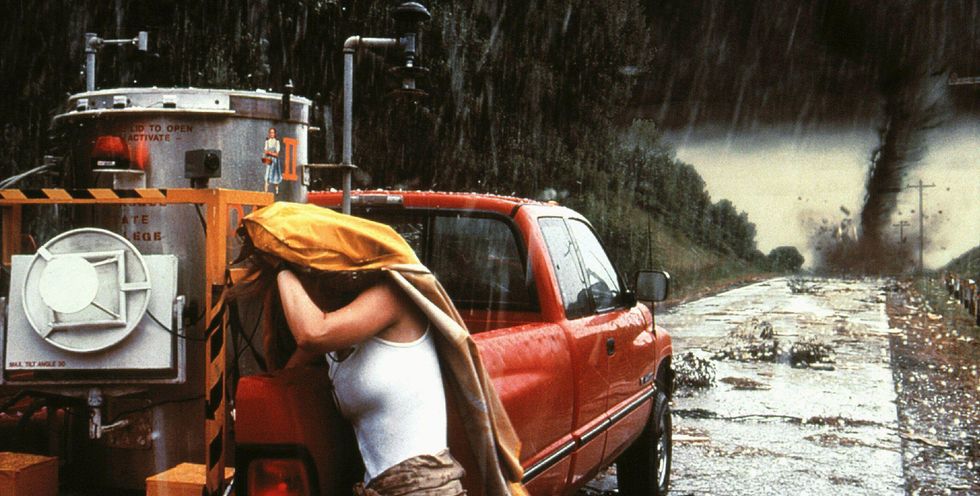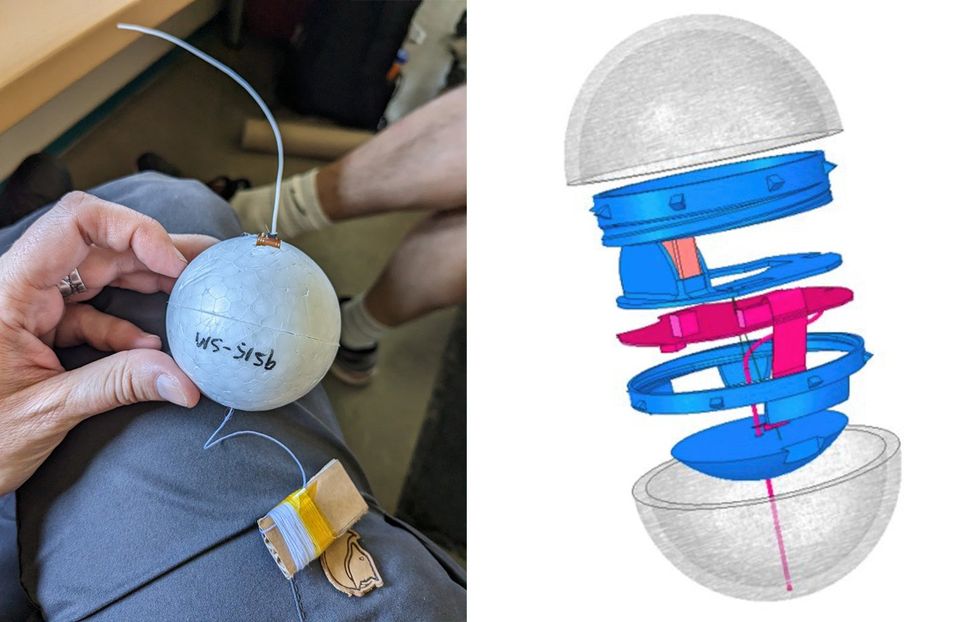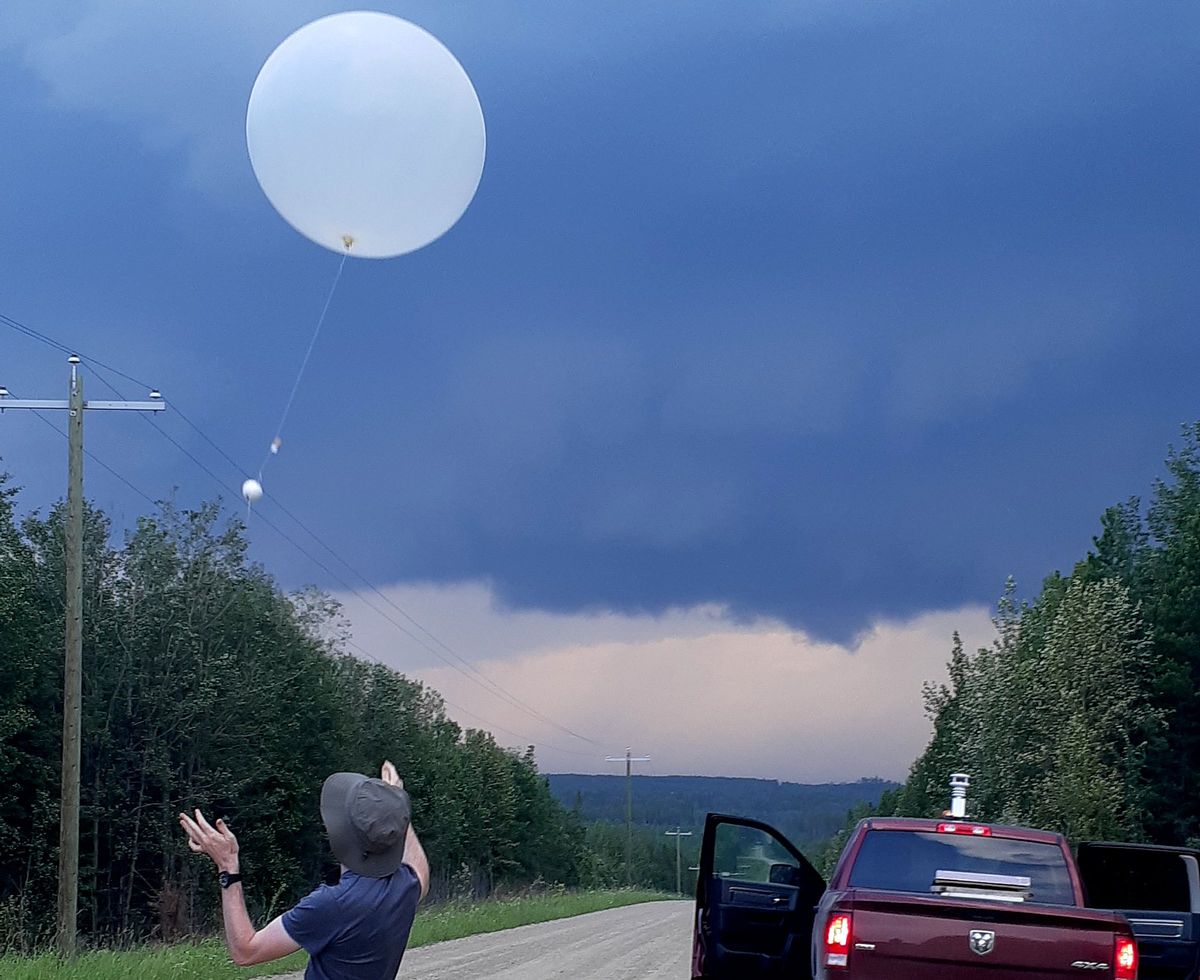Inspired by the blockbuster 1996 film Twister, a new sensor shaped like a hailstone can hurtle around within the eye of a thunderstorm to shed light on the mysteries behind the growth of hail.
Major thunderstorms known as severe convective storms cost US $35 billion or nearly 70 percent of all insured natural-catastrophe losses worldwide in the first half of 2023, according to global insurance firm Swiss Re. Roughly 60 to 80 percent of the insured losses from these powerful storms are due to damage from hail, according to the National Association of Insurance Commissioners.
The new sensors, dubbed “hailsondes,” are designed to fly around freely within storms to behave like real hail.
At the same time, when it comes to all the kinds of precipitation linked to these violent storms, hail is the least understood. This is because much remains unknown about how these balls of ice move and grow within various areas of each storm.
In the movie Twister, researchers sought to deploy weather sensors into the heart of a tornado to learn more about the disasters. In real life, scientists have deployed a wide variety sensors to analyze storms—for instance, drones and high-speed cameras, either on the ground or up to a few hundred meters high, says Joshua Soderholm, a thunderstorm scientist at the Australian Bureau of Meteorology in Melbourne, who helped develop the new sensor.

However, collecting data within storm clouds “becomes much more difficult due to the incredible winds, large hail, and extreme icing conditions,” Soderholm explains. Two previous attempts to deploy sensors within storms include a now-retired armored T-28 aircraft from the South Dakota School of Mines and Technology and balloon-tethered sensors known “swarmsondes,” he says.
How did Twister inspire new tech?
In contrast, the new sensors, dubbed “hailsondes,” are designed to fly around freely within storms to behave like real hail. Each probe is shaped like a hailstone—a 24-gram sphere 6.5 centimeters wide, a modified version of the Windsond S1 from Sparv Embedded in Linköping, Sweden. Although they are launched via balloons, the hailsondes get released once updrafts within storms are strong enough to keep the sensors aloft.
The hailsondes do not measure the trajectories or conditions of actual hailstones. Instead, they behave much like real hailstones within a storm, “collecting information on how hail grows, gets moved by winds and falls,” Soderholm says. “Careful design of the hailsonde shell and optimization of the sensors made it possible to not only survive these conditions, but also collect valuable measurements.”

Soderholm came up with the idea of the hailsonde because he says he enjoys investigating how new technology might benefit his field of thunderstorm science, “especially for measuring processes that people previously thought was not achievable due to technology barriers,” he notes. This includes 3D-scanning hailstones to shed light on how they evolved within storms and what they look like on radar; using computer vision to analyze cross-sections of hailstones to deduce how they grew; and using drones to examine hailstone shape in the air.
“The hailsonde idea started after seeing some new work on simulating hailstone trajectories from my colleague Matt Kumjian,” Soderholm says. “I really wanted to know if the simulations were realistic but we had no idea, so I starting thinking about a way to collect measurements.”
“I believe my research highlights the incredible potential of observations to fill data gaps we previously thought not possible.... Modern tools like 3D printing, Python, the Internet of Things, single-board computers allow for rapid prototyping without a Ph.D. in engineering.”
—Joshua Soderholm, Australian Bureau of Meteorology
The new devices was made possible via recent advances in miniaturized weather sensors from Sparv Embedded. “This includes essential components like the battery, GPS, temperature and humidity sensors, and telemetry,” Soderholm says. All told, the battery weighs only 1.9 grams and the electronics 9 grams, he notes.
“Further, we heavily relied on 3D printing to prototype and for production, which keeps costs to a minimum,” Soderholm says.” Our team did not make any technological discoveries, but rather combined existing but recently developed approaches to achieve the hailsonde design. This definitely took some creativity, risk taking—we had no idea if it would work properly inside a storm—and lots of hard work without anything to show.”
The researchers recently field-tested the hailsondes for the first time near the town of Olds in central Alberta, Canada. “Every morning our field coordinator provided weather-forecast briefings and we made decisions on the best target regions for the day,” Soderholm recalls. “These regions could be anywhere from our backdoor or 3 hours’ drive away.”
As the day progressed, the scientists would monitor developing storms from satellite and radar data as well as visual cues. As storms began to intensify, “a confident driver and a good navigator were critical for getting into the right position,” Soderholm says.
“The final requirements are a well-behaving storm and a good road network,” Soderholm adds.
“Storms can weaken or change direction in minutes and this is often not entirely predictable, while without good roads you cannot get very far. Despite the large number of hailstorms in Canada, only on one day did all of these conditions line up.”
On 24 July, at about 4:30 p.m., the researchers conducted the first successful flight on the hailsondes by intercepting a powerful storm producing giant hail and launching two devices within it. The devices detached from their balloons at an altitude of about 3.5 kilometers, with winds exceeding 120 km/h lifting the sensors up to altitudes of more than 7 km.
“I believe my research highlights the incredible potential of observations to fill data gaps we previously thought not possible,” Soderholm says. “Innovation in meteorology is typically quite slow, as much of it relies on expensive and very complicated hardware—for example, satellites and weather radars. Modern tools like 3D printing, Python, the Internet of Things, single-board computers and so on allow for rapid prototyping without a Ph.D. in engineering.”
The fact that the scientists know the exact size and shape of a hailsonde “is very useful when simulating its behavior after a hailstorm event,” Soderholm says. However, “hail can grow in many different regions of the parent storm, under different conditions and is moved by different winds, leading to the often large range in sizes and shapes you see on the ground.” Many hailsonde launches into various regions of storms are therefore needed before the scientists can draw more robust conclusions about the way in which hail forms and evolves, he says.
The scientists now plan to scale up their work from two probes in one region of a storm to several probes across different regions of a storm, Soderholm notes. They also want to prioritize storms with the best weather-radar coverage, “as this will allow us to test new ideas to better simulate hailstones,” he notes. This may happen through Canada’s Northern Hail Project, the German LIFT project, and the proposed U.S. ICECHIP project, he adds.
“Once we have a large sample of hail trajectories, we expect to develop new insights into the growth of hail with respect to weather-radar observations, which will allow for the development of new and more accurate tools for nowcasting hail and providing warnings,” Soderholm says.
- How to Build a More Resilient Power Grid ›
- The Threat of Climate Change Should Concern All Technologists ›
- AI Sharpens Rainfall Estimates from Satellites - IEEE Spectrum ›
Charles Q. Choi is a science reporter who contributes regularly to IEEE Spectrum. He has written for Scientific American, The New York Times, Wired, and Science, among others.



